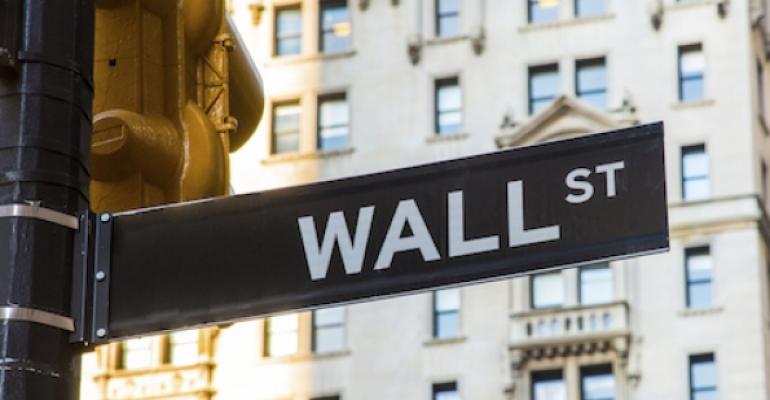 This post is part of the Reporter’s Notebook blog.
This post is part of the Reporter’s Notebook blog.
Investors are pouring money into restaurant IPOs. In many cases, the companies’ values skyrocket on the first day of trading and often thereafter.
This can provide a quick path to riches for restaurant entrepreneurs and the private equity companies that fund them.
But there’s a downside to these prices. A number of chains failed to maintain their early momentum. A few are seeing stock prices fall almost uncontrollably despite sales and unit growth.
We’ve written about this before. But these falling stock prices can be a real problem. They can complicate the exit process for private equity sponsors. It can delay the exit. Or it could leave the company with a volatile base of investors that aren’t in the stock for the long-term but instead bet on short-term fluctuations in price. And those investors don’t stick around long, leaving the companies with many small investors, who are often frustrated.
“You’ve got to do a lot of soul searching” if you’re going to go public, John Tibe, managing director and joint head of investment banking at Jefferies, told an audience at the NRA Show last month. “There’s a wasteland of small, microcap companies that have been forgotten about. These are companies that have missed earnings, had trouble, fell off the radar screen and now have shareholder bases that aren’t the friendliest in the world.”
Stock investors are making bets on the future of a company. The more growth they anticipate, the higher the valuation. Many of these growth chains going public are getting high valuations based on their growth potential.
The problem is that public investors are giving these companies such high valuations that they are setting unrealistic expectations. Growth in restaurant companies can be difficult and time consuming and isn’t as easy as it appears.
“The current high valuations mean there are very high implicit growth expectations,” said Nick Mazing, the founder and portfolio manager of Ampera Capital, an investment manager specializing in consumer and retail sectors. “I almost don’t know if some investors realize how difficult growth is: A new unit takes months at best to open. Rapid growth can mean low-quality growth with subpar locations and problematic staffing. And a bad location can have a serious impact on a chain with a low store base.”
These unrealistic valuations can prompt long-term investors to sell the stock on a spike.
 That happened with Potbelly Corporation in 2013. Its IPO was in 2013. It opened at $14. Exploded by more than 120 percent on the first day of trading, reaching a high of $32.50 on the second day.
That happened with Potbelly Corporation in 2013. Its IPO was in 2013. It opened at $14. Exploded by more than 120 percent on the first day of trading, reaching a high of $32.50 on the second day.
Leon Cooperman, founder of the hedge fund Omega Advisors, famously told the Wall Street Journal that he held Potbelly for “37 seconds.” Potbelly’s stock fell precipitously after that first two days, falling close to the single digits at one point thanks to a series of earnings reports investors considered disappointing. It has recovered some to more than $14 of late.
“A big spike after an IPO for a relatively predictable business (such as restaurants) can lead to the big institutional IPO buyers flipping the stock because it becomes clear that the overvaluation is drastic and likely unsustainable,” Mazing said. “They sell to buyers or programs who are attracted by the short-term momentum regardless of fundamentals.”
These short-term investors generate massive fluctuations in the stock price one way or the other, and then they leave, too. “When the momentum players leave, you end up with 50 percent-plus drops in short order,” Mazing said.
Noodles & Company went public in June 2013 at $18, doubled its first day, and kept going to nearly $50 at one point. It was successful enough that the company did a secondary offering at $39.50, enabling owners to reduce their positions.
But a succession of disappointing sales results have led to a steady decline in its stock price — even though the company is adding units. It is currently trading at less than $15 a share. It is currently trading at an enterprise value multiple of less than 11 times cash flow.
That’s low for a growth chain (Zoe’s Kitchen, for instance, has a valuation of over 100; Shake Shack Inc. has a multiple of more than 80). It’s also low for any chain — it’s a smaller valuation than investors are currently giving the slumping, cost cutting McDonald’s Corp.
A falling stock price can make it difficult for a company’s sponsor to exit through a secondary offering. Companies with rising stock prices have an easier time convincing institutional investors to buy more stock in a secondary offering, even at a discounted price, Mazing said.
When the stock is falling, the underwriters handling the secondary have to give steeper discounts to get the investors to contribute. That can further hurt the stock price going forward. “When the discount is deeper, it becomes a reference point in the market and can act as a ceiling on the share price,” Mazing said.

